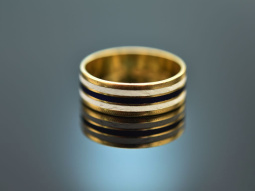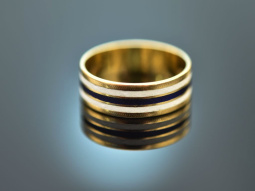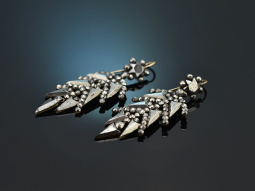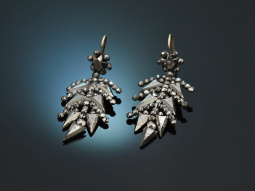Classicism
(1780 - 1820)
From 1780 until around 1820, the formal language of Classicism prevailed, which clearly stood out from the courtly pomp of the preceding Rococo period. The style of classicism was an expression of a new social ideal and represented a return to the forms and values of classical antiquity. Classicist jewellery was therefore simpler and characterized by strict lines and a preference for antique, Roman-Greek ornamentation. Mehr erfahren »
A return to antiquity
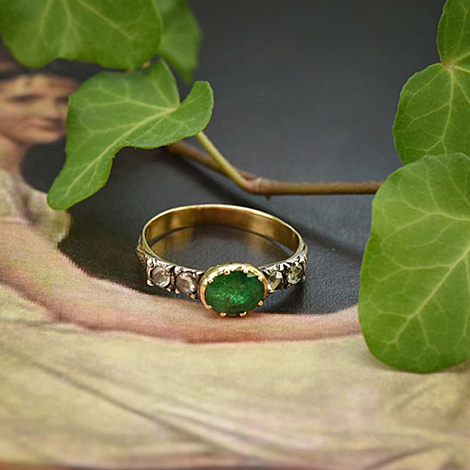
The archaeological finds from Pompeii on the Gulf of Naples reinforced the enthusiasm for antiquities that was already prevalent at the time. In the course of these excavations, gems and cameos in particular came into fashion, which were worked into wonderful pieces of jewellery. Micromosaics were also popular in various types of jewellery and were often presented as masterfully crafted images of ancient sites.
Classicist jewellery was often worn as ensembles, so-called parures or demiparures. These consisted of a necklace, (long) earrings, bracelets and a brooch - completed by a tiara in the courtly circle. Gemstones were usually set in delicate gold wires (cannetille), which resembled finely spun lace and were complemented by decorative foliage and rosettes.
Jewellery of classicism
Classicist necklaces and bracelets were characterised by their strict rhythm and clear structure. Gems, micromosaics or precious stones were set in delicate gold settings and strung together, connected only by filigree strands of gold chains or intermediate elements of seed pearls. If you came from an aristocratic family, you also liked to wear rivière necklaces and bracelets made of diamonds of the same size or arranged in a delicate gradient, set in classic, unadorned and geometric settings for formal occasions.
Pendants were rather rare in this period and mainly appeared in the form of crosses.
Classicist earrings were characterised by their length and flat design. Geometric elements were placed either on top of or next to each other and set with coloured gemstones, diamonds or cameos. Earrings in a "simple" pear shape were particularly popular at the beginning of the 19th century.
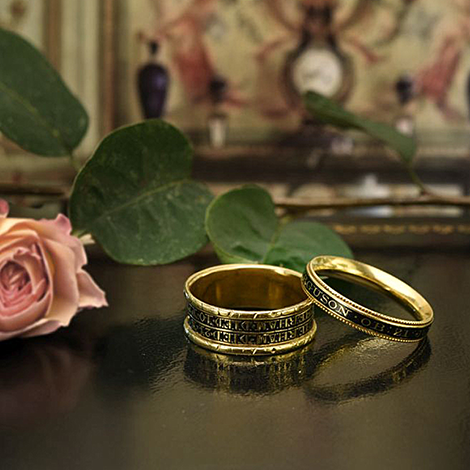
The Classicist brooch was two-dimensional, but its shape was highly imaginative: stars, arrows, the sun and half moons were popular motifs and were often set entirely with diamonds.
Another typical representative of classicism was the marquise ring with its characteristic pointed oval shape. Often set with diamonds or precious gemstones, it is still known today as the navette ring, as its shape is reminiscent of a small ship (French navette = little ship).
Alternatively, rings were worn in an oval or round shape, with the ring band usually splayed out to form the shoulders. Large centre stones or cameos could sit in the centre of such a design. Or blue enamel plates were used, the centre of which were decorated with diamond-set monograms or small imagery.
Buy classicistic jewellery: online or on site
In our online shop you will find consciously selected and authentic objects from the classicistic period, historical pieces of jewellery that tell of a bygone era. You are also welcome to view and try them on in person at our shop in Munich. Our team of art historians will be happy to advise you.
